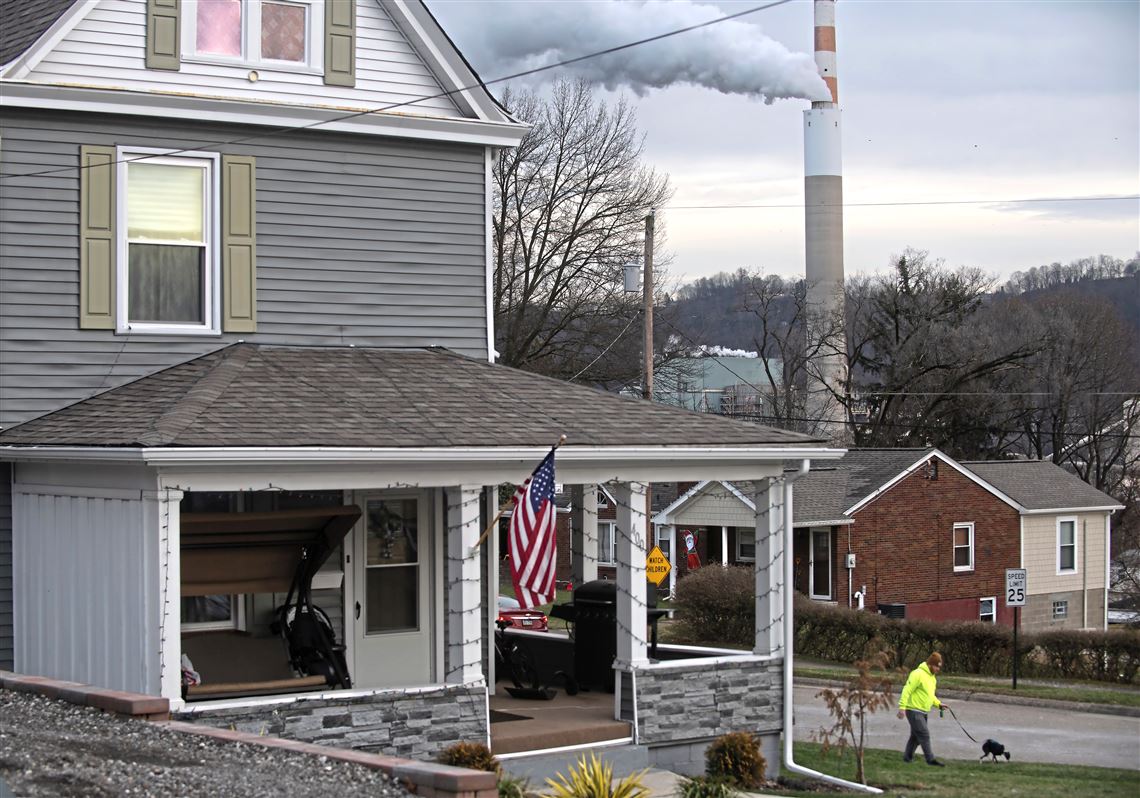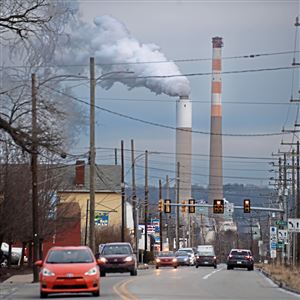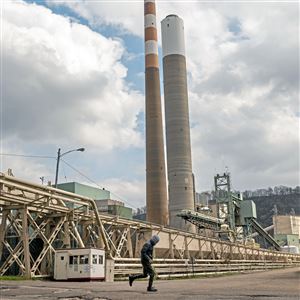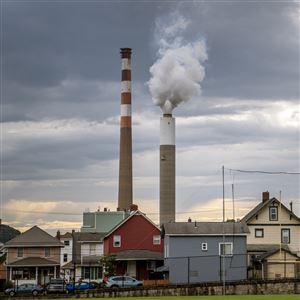After a decade of decline, climate-changing emissions from Pennsylvania’s power plants are on the rise.
Carbon dioxide emissions from Pennsylvania’s electricity generators increased 9.6% between 2020 and 2021, a sharp rebound driven by the economic recovery from the depths of the pandemic, according to figures released last week by the U.S. Environmental Protection Agency.
Power plants in the commonwealth released 85.3 million tons of carbon dioxide last year, the highest level since 2016.
Pennsylvania’s pandemic emissions bounce is roughly in line with national trends. Power sector carbon emissions were up 7% nationally between 2020 and 2021, because coal-fired generation rebounded as natural gas prices and energy demand increased, the EPA said.
But over the past two years, Pennsylvania’s trajectory was worse than the nation’s. Last year, power sector emissions in the commonwealth were up 3% from pre-pandemic levels in 2019. Across the U.S., power plant emissions were down 4% during that period, according to the EPA.
“We have a certain carbon budget, and every year we delay — and particularly every year that we increase carbon pollution — we’re further eating into that budget. That’s going to make meeting our climate goals even harder and even more expensive,” said Rob Altenburg, director of the Energy Center for the environmental nonprofit PennFuture.
The three largest carbon dioxide emitters in Pennsylvania’s power sector in 2021 — Keystone, Conemaugh and Homer City generating stations — are coal-fired power plants in Indiana and Armstrong counties. Six of the top 10 emitters are natural gas power plants built in recent years to capitalize on plentiful gas from the Marcellus Shale.
Pennsylvania’s emissions surge last year was driven by several conventional and waste coal-fired power plants, including Cheswick Generating Station in Allegheny County, that ran more than they had in years, according to the EPA’s data. Cheswick’s owners plan to retire the plant at the end of March.
Waste coal plants have been buttressed, in some cases, by cryptocurrency mining and by recent changes to the state’s alternative energy law that were designed to protect them.
The emissions rise in Pennsylvania over the past two years, meanwhile, was pushed by large new natural gas-fired power plants coming online.
Those additions more than offset the fact that the state’s largest remaining conventional coal-fired power plants are running — and polluting — far less than they did a few years ago, in the face of competition from natural gas, renewables and energy efficiency in the regional power market.
Keystone, Conemaugh and Homer City each saw a greater than 30% decline in their CO2 emissions between 2019 and 2021 because they are running well below their full capacity.
Competition from gas was also a major factor in the retirement of the Three Mile Island nuclear plant in 2019, which eliminated a significant source of carbon-free electricity in Pennsylvania.
Power sector carbon emissions in Pennsylvania are still well below the peak of 123.6 million tons in 2007. The decade-long decline was largely thanks to new power plants running on cheap natural gas, forcing coal plants out of the market.
But Pennsylvania has likely seen the limit of that benefit, Mr. Altenburg said.
There are only six remaining conventional coal-fired power plants in Pennsylvania, down from 23 in 2004. All but one of the plants have announced plans to retire or transition to other fuel sources within the decade. The last, Homer City, said it plans to make a decision by April 4 on whether it will stop operating one or more of its three units in 2023.
“Gas conversions are not going to keep the emissions going down like they have been,” Mr. Altenburg said. “There just isn’t that much coal left to replace.”
The growing role of gas in Pennsylvania’s electricity mix and the still-small part played by renewables helps explain why Pennsylvania’s power sector greenhouse gas emissions rose since 2019 while the nation’s emissions kept falling, he said.
“The trend is not going to be down in emissions unless we bring a whole lot more clean generation online,” Mr. Altenburg continued.
Gov. Tom Wolf has set a goal of reducing Pennsylvania’s total greenhouse gas emissions 80% by 2050 from 2005 levels and 26% by 2025, in line with international accords aiming to limit catastrophic warming.
To cut power sector emissions, the Wolf administration is finalizing rules to establish a price and declining cap on carbon dioxide pollution from power plants. Under the Regional Greenhouse Gas Initiative, known as RGGI, Pennsylvania’s annual power sector emissions in 2030 will be capped 20 million tons lower than 2022 levels.
“Past emissions decreases in Pennsylvania’s power sector do not guarantee future emissions reductions,” Pennsylvania Department of Environmental Protection spokesman Jamar Thrasher said. “We need further policy actions, specifically beginning with participation in RGGI, to ensure emissions continue to be reduced to meet the governor’s greenhouse gas emissions reductions goals and mitigate future global climate change.”
The carbon cap and fee plan has faced strong opposition from Republicans that control the General Assembly as well as coal-fired power plant operators and labor unions that work to run and maintain them.
The Regional Greenhouse Gas Initiative didn’t prevent backsliding during the recovery from the pandemic. The 10 New England and mid-Atlantic states that were members of the initiative in 2020 and 2021 saw their power sector carbon emissions increase 8% last year, according to the EPA’s data.
Laura Legere: llegere@post-gazette.com.
First Published: February 24, 2022, 11:00 a.m.




















